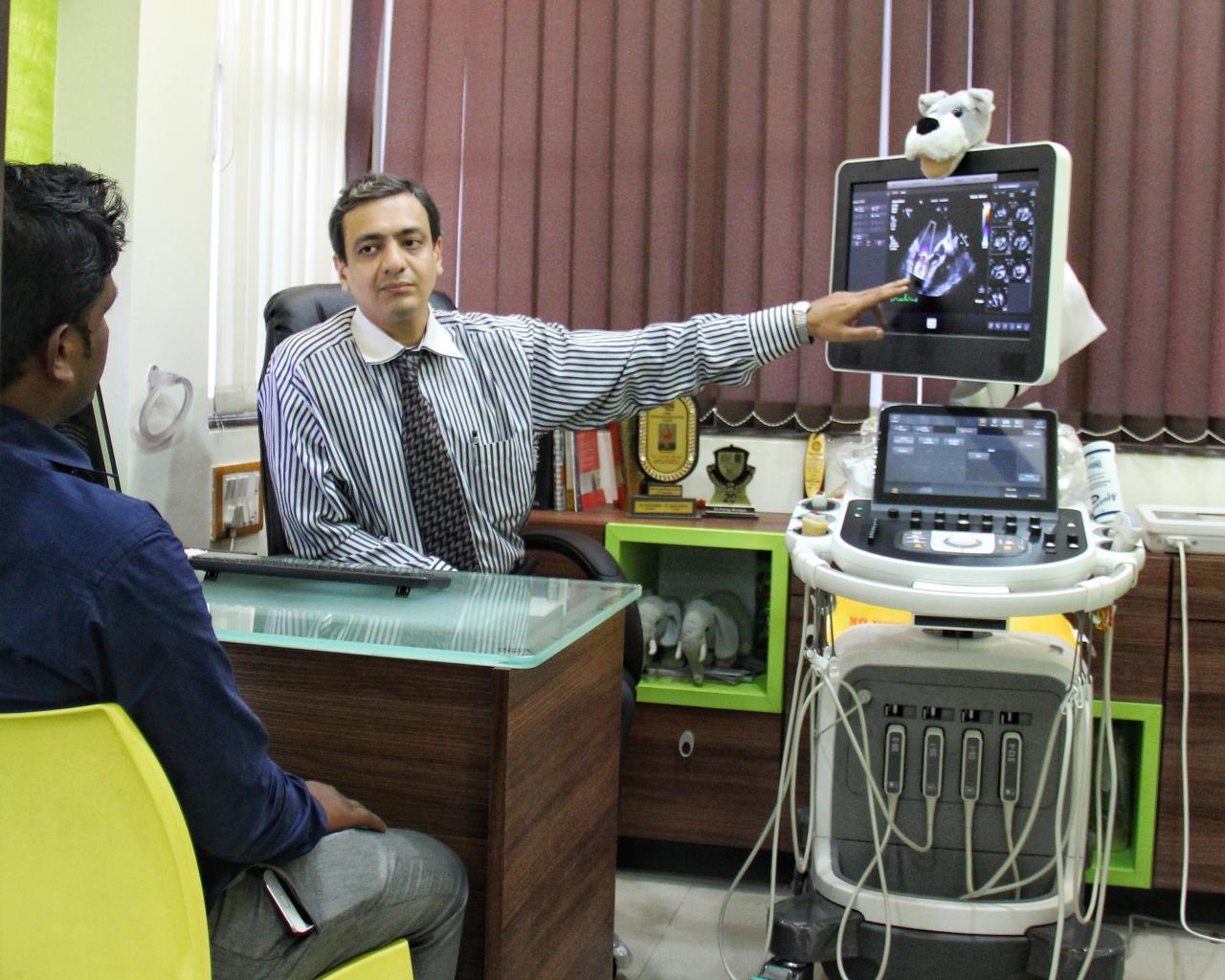
What does 2D Echocardiography colour Doppler mean?
In 2D Echocardiography, 2D stands for 2 dimensional, Echo means reflection of sound waves cardiography is graph or image of heart and Colour Doppler is application of Doppler principle to analyze blood flow in heart. In simple words it is images of heart produced with help of sound waves.
What is the scientific principle behind this test?
Sound waves at very high frequency i.e. > 20000 Hz. which is beyond capacity of human ears to hear are used during this test. With the help of pizo electrical effects, ultrasonic waves are generated. They are transmitted through body with a hand held probe. At tissue interface ( heart, surrounding tissue) , these waves get reflected ( Echo) which are analyzed by machines to produce image ( cardiograph). Doppler shift refers to change in frequency of waves when its source is moving. As blood is moving in heart, there is change in frequency of reflected sound waves. It help to determine obstruction to blood flow, altered pattern, severity of leakage of valves.
Echocardiogram provides detail information about structure of various parts of heart. It can tell whether chambers, valves, partitions, great vessels, connection etc are normal or abnormal. It also gives an idea about cause of dysfunction . Colour Doppler as an integral part of 2D echo examination. It gives idea about obstruction to blood flow at valves, leakage in valves, altered flow pattern and possible reason behind it.
Who all does need 2D echocardiography and colour Doppler examination?
Heart diseases are know present at any time in life, in utero ( mothers womb), immediately after birth, infancy to adulthood. All these age groups can undergo the examination with high degree of accuracy.
What is difference between 2D echocardiography test at these age groups?
Most important difference is that of machine. The heart of a premature baby is very small as compared to infant, which is in turn smaller than adult. Small heart require dedicated high frequency probe which have the highest resolution possible and small pad.
Another important difference is that of man behind machine. Diseases of neonates, infants are different from that of adults. Fetal 2D echocardiography is very advanced test and requires dedicated training along with understanding of complexity.
How to prepare for the test?
This is generally a planned test. Even if done in emergency is does not require any special preparations.
There is no need for 1) fasting, 2) blood tests
Wear loose clothes preferably shirt as they can be opened from front during examination.
Take your normal diet and regular dose of medication if any. Bring your old reports if any as they will help doctor to come to logical conclusion.
It is important that infants and children are sleeping during test. Prevent baby from sleeping before test. Don’t give any food 1 hour before test.
For fetal echo, bring all previous report including those of previous pregnancy if any. It is generally conducted after 18 weeks ( 4 month and 1 week.). In exceptional circumstances as early as 14 to 16 weeks scan
Consult doctor
How will you undergo the test?
As the transducer is placed directly on the chest wall, abdomen, and neck, you will be asked to disrobe accordingly. Then assistant will help you to lie down on your back or left side. The transducer with a jelly applied to it will be placed directly on your chest wall. Images of your heart will be recorded in various ways from different positions.
Incase baby does not sleep, doctor may give a short acting sedative to make baby sleep. This will facilitate examination and prevent resistance from the kid. Baby will be kept under observation till he/she is completely awake
Does this test have any side effects?
This test is totally harmless and does not have any contraindications
Does patient feel any discomfort after test?
There is no discomfort from this test. One can continue with his or her daily activities.
How to use information obtained from 2D echocardiography examination?
It is the gold standard for diagnosis of heart disease in children and management plan now solely based on information obtained from it. Very rarely one has to undergo other invasive tests like angiography purely for diagnostic purpose. Your treating paediatric cardiologist will guide you after going through the report.

REPLY COMMENT